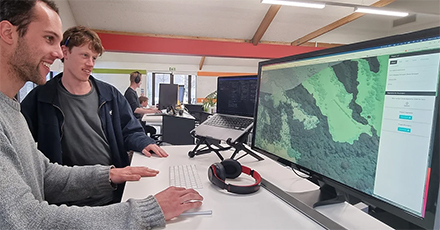New Zealand forestry developer Tāmata Hauhā and carbon-technology company CarbonCrop are joining forces united by a clear long-term vision to turn native and biodiverse forests into productive economic assets for landholders through carbon forestry. Source: Timberbiz
Tāmata Hauhā works with predominantly Māori landholders, providing funding and expertise to establish forests that achieve the goals of the landholder and generate long-term revenue.
CarbonCrop is a technology platform that simplifies access to carbon markets, using AI and automation to deliver robust carbon analysis, monitoring and management.
“We’re excited to be partnering with CarbonCrop who bring the technology and experience to simplify access, admin and compliance with the ETS for us and our landholders. CarbonCrop is particularly powerful when it comes to native and biodiverse carbon forestry which makes them an ideal partner supporting our kaupapa,” Tāmata Hauhā CEO, Blair Jamieson said.
More than 80% of the existing forest area registered by CarbonCrop is native forest. In 2023 they have distributed more than NZ$25m to landholders through ETS incentives.
“It’s been inspiring to see Tāmata Hauhā’s balance of pragmatism and vision. Their work has an immediate impact and closes the funding and expertise gap on the large-scale restoration of native and biodiverse forests. We’re very philosophically aligned, which makes it a rewarding partnership,” CarbonCrop Co-founder, Nick Butcher said.
Both companies understand the barrier that finance plays in carbon forestry and allow landholders to overcome the complexity and initial financial barriers that traditionally may have stopped them.
CarbonCrop believes its technology helps simplify access to carbon markets and maximise carbon income. The approach from Tāmata Hauhā is a profit share arrangement where landholders provide the land and Tāmata Hauhā finances and delivers the planting of the new forest and all ongoing forest management activities. The partnership gives landowners a clear pathway to understanding and realising the potential of their land, with low up-front cost.
“Landowners restoring native and biodiverse forests – the forests we most want to encourage – face significant challenges in leveraging carbon markets and incentives. Native forests currently make up only around 17% of the forest in the ETS. Working together with Tāmata Hauhā we can change this,” Mr Butcher said.
The partnership will also help address the challenge of access. Māori land is often in more remote areas making access and health and safety more difficult.
CarbonCrop leverages a combination of data, AI, satellite imagery, and automation to enable scalable monitoring and verification of carbon removals across extensive areas of mixed-species, biodiverse forests.






